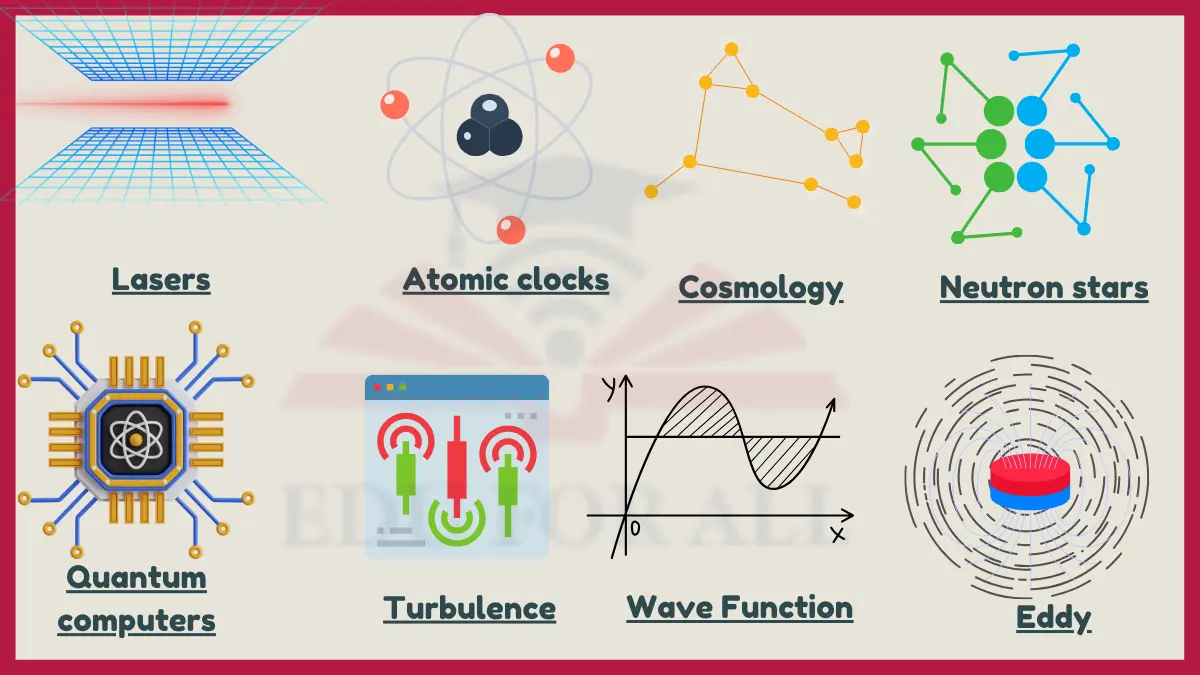A Bose-Einstein condensate (BEC) is a state of matter that occurs when a large number of bosons are cooled to a very low temperature. Bosons are particles that can occupy the same quantum state at the same time, such as photons and helium-4 atoms. When bosons are cooled to a very low temperature, they can condense into a single quantum state, forming a BEC.
Rubidium-87, sodium, metastable helium, and ultracold molecules are a few examples of Bose-Einstein condensates (BECs).

Examples of Bose-Einstein Condensate
Here are 10 examples of Bose-Einstein condensates:
1. Superfluid helium-4
Superfluid helium-4 is an example of BEC that is made up of helium-4 atoms. Superfluid helium-4 has a number of unusual properties, such as the ability to flow through tiny holes without friction and the ability to climb up walls.
2. Superconducting materials
Superconducting materials are made up of atoms that can form BECs. Superconducting materials have no electrical resistance, which makes them useful for a variety of applications, such as power grids and medical imaging devices.
3. Lasers
Lasers are made up of photons that are all in the same quantum state. This allows lasers to produce coherent beams of light that can be used for a variety of applications, such as cutting metal and performing surgery.
4. Atomic clocks
Atomic clocks are based on the fact that the frequency of light emitted by atoms depends on their temperature. BECs can be used to create atomic clocks that are more accurate than conventional atomic clocks.
5. Quantum information processing
BECs are being studied for their potential applications in quantum information processing. For example, BECs could be used to create quantum computers that are much faster and more powerful than conventional computers.
6. Cosmology
BECs are thought to play a role in the early universe. For example, BECs could have been responsible for the formation of large-scale structures, such as galaxies and clusters of galaxies.
7. Neutron stars
Neutron stars are thought to contain BECs of neutrons. Neutron stars are extremely dense objects that are formed when massive stars collapse at the end of their lives.
8. Dark matter
Dark matter is a mysterious substance that makes up most of the matter in the universe. Some scientists believe that dark matter could be made up of BECs.
9. Quark-gluon plasma
Quark-gluon plasma is a state of matter that is thought to have existed in the early universe. Quark-gluon plasma is thought to be a BEC of quarks and gluons.
10. Quantum computers
Quantum computers are a new type of computer that uses the principles of quantum mechanics to perform calculations. BECs could be used to create quantum computers that are much faster and more powerful than conventional computers.
11. Spin-Orbit Coupling
BECs can be used to create optical vortices, which are beams of light that have a twisted wavefront. Optical vortices have a variety of potential applications, such as optical tweezers and atom interferometers. However, spin-orbit coupling can cause optical vortices to distort and lose their shape. Bose-Einstein compensation can be used to cancel out spin-orbit coupling, which would allow for the creation of more stable and powerful optical vortices.
12. Turbulence
BECs can be used to study turbulence in superfluids, such as helium-4. Turbulence is a major challenge for superfluids, as it can limit their performance and reliability in applications such as cooling and energy transfer. Turbulence in BECs help scientists can develop new ways to mitigate turbulence in superfluids.
13. Wave Function
The wave function of a BEC can be used to study quantum mechanics at the macroscopic scale. For example, scientists have used BECs to study the quantum interference of atoms and to create quantum entanglement between atoms. BECs also provide a unique platform for studying the physics of many-body quantum systems.
14. Solitary Wave
Solitary waves in BECs can be used to create atom lasers. Atom lasers are coherent beams of atoms that have a variety of potential applications, such as atom lithography and atom sensors. Solitary waves in BECs can also be used to study the physics of nonlinear wave propagation.
15. Superfluid
BECs can be used to study the physics of superfluidity, such as the critical temperature for superfluidity and the dynamics of superfluid vortices. BECs also provide a platform for testing new theories of superfluidity.
16. Eddy
Eddies in BECs can be used to create microfluidic devices. Microfluidic devices are tiny devices that can be used to manipulate and control fluids at the micrometer scale. BECs can also be used to study the physics of eddy currents, which are currents that are induced in a conductor by a changing magnetic field.

